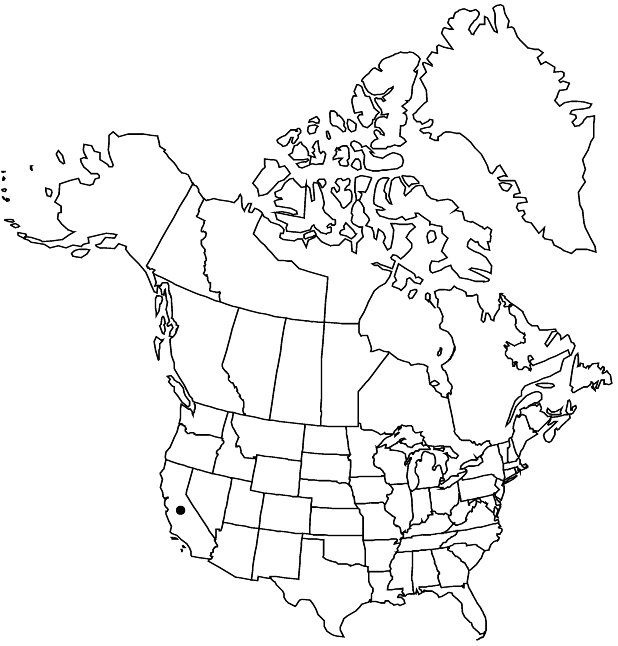Difference between revisions of "Dudleya verityi"
Cact. Succ. J. (Los Angeles) 55: 196, figs. 1–5, 7. 1983 ,.
FNA>Volume Importer |
imported>Volume Importer |
||
| (6 intermediate revisions by 2 users not shown) | |||
| Line 7: | Line 7: | ||
}} | }} | ||
|common_names=Verity’s dudleya | |common_names=Verity’s dudleya | ||
| + | |special_status={{Treatment/ID/Special_status | ||
| + | |code=E | ||
| + | |label=Endemic | ||
| + | }}{{Treatment/ID/Special_status | ||
| + | |code=C | ||
| + | |label=Conservation concern | ||
| + | }} | ||
|basionyms= | |basionyms= | ||
|synonyms= | |synonyms= | ||
| Line 24: | Line 31: | ||
|distribution=Calif. | |distribution=Calif. | ||
|discussion=<p>Of conservation concern.</p><!-- | |discussion=<p>Of conservation concern.</p><!-- | ||
| − | --><p>Dudleya verityi forms clumps to 4 dm in diameter and is known from near Mount Conejo in the Santa Monica Mountains; it is considered to be seriously threatened (California Native Plant Society, http://cnps.web.aplus.net/cgi-bin/inv/inventory.cgi). It hybridizes in nature with D. blochmaniae subsp. blochmaniae.</p> | + | --><p><i>Dudleya verityi</i> forms clumps to 4 dm in diameter and is known from near Mount Conejo in the Santa Monica Mountains; it is considered to be seriously threatened (California Native Plant Society, http://cnps.web.aplus.net/cgi-bin/inv/inventory.cgi). It hybridizes in nature with <i>D. blochmaniae </i>subsp.<i> blochmaniae</i>.</p> |
|tables= | |tables= | ||
|references= | |references= | ||
| Line 33: | Line 40: | ||
-->{{#Taxon: | -->{{#Taxon: | ||
name=Dudleya verityi | name=Dudleya verityi | ||
| − | |||
|authority=K. M. Nakai | |authority=K. M. Nakai | ||
|rank=species | |rank=species | ||
| Line 47: | Line 53: | ||
|publication title=Cact. Succ. J. (Los Angeles) | |publication title=Cact. Succ. J. (Los Angeles) | ||
|publication year= | |publication year= | ||
| − | |special status= | + | |special status=Endemic;Conservation concern |
| − | |source xml=https:// | + | |source xml=https://bitbucket.org/aafc-mbb/fna-data-curation/src/2e0870ddd59836b60bcf96646a41e87ea5a5943a/coarse_grained_fna_xml/V8/V8_383.xml |
|genus=Dudleya | |genus=Dudleya | ||
|subgenus=Dudleya subg. Dudleya | |subgenus=Dudleya subg. Dudleya | ||
Latest revision as of 22:43, 5 November 2020
Caudices branched apically, (cespitose), 2–10 × 0.2–1 cm, axillary branches absent. Leaves: rosettes 25–100+, in clumps, 6–10-leaved, 2–8 cm diam.; blade blue-green, oblong-lanceolate, 2–5 × 0.4–0.8 cm, 2–3 mm thick, base 0.5–0.8 cm wide, apex acute to acuminate, surfaces not farinose, glaucous. Inflorescences: cyme mostly 2–3-branched, obpyramidal; branches not twisted (flowers on topside), simple or 1–2 times bifurcate, (3–6 cm diam.); cincinni 1–3, 2–10-flowered, circinate, 2–5 cm; floral shoots 3–15 × 0.3–0.6 cm; leaves 5–20, ascending, lanceolate, 8–10 × 5–7 mm, apex acute. Pedicels ascending to erect, not bent in fruit, 3–5 mm. Flowers: calyx 4–5 × 5–7 mm; petals connate 1–2 mm, bright yellow with greenish midribs, 10–14 × 2.5–4 mm, apex sharply acute, tips outcurved; pistils connivent, erect. Unripe follicles erect. 2n = 34.
Phenology: Flowering late spring.
Habitat: North-facing volcanic rocks
Elevation: ca. 100 m
Discussion
Of conservation concern.
Dudleya verityi forms clumps to 4 dm in diameter and is known from near Mount Conejo in the Santa Monica Mountains; it is considered to be seriously threatened (California Native Plant Society, http://cnps.web.aplus.net/cgi-bin/inv/inventory.cgi). It hybridizes in nature with D. blochmaniae subsp. blochmaniae.
Selected References
None.
